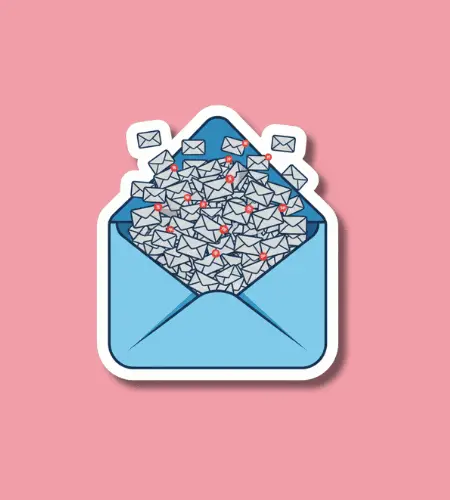Inbox Zero Day is observed on October 6, a day dedicated to encouraging people to tame the chaos of their email inboxes.
Table of Contents
History of Inbox Zero Day
The concept behind Inbox Zero—maintaining an email inbox with minimal clutter—was popularized by productivity expert Merlin Mann in the mid‑2000s. Mann’s idea wasn’t merely to have zero emails, but rather to reduce the mental burden of an overflowing inbox by processing each message promptly. Over time, as email usage ballooned and digital overload became a widespread challenge, the idea evolved into a movement of behavioral change.
Inbox Zero Day itself is relatively recent. It is said to have been established around October 2020 by the creators of the productivity email client Superhuman, as a way to rally attention to email management practices. Since then, it has been celebrated annually on October 6.
Why is Inbox Zero Day important?
In our modern work lives, email has become both indispensable and burdensome. Even a modest influx of emails can accumulate overnight, creating a creeping sense of obligation, guilt, or anxiety over unread or unanswered messages. Inbox Zero Day gives us permission—and a nudge—to pause and reassess our relationship to this tool rather than letting it dominate our attention. The act of confronting the backlog, pruning tangents, and organizing thoughtfully can feel like reclaiming mental space.
Furthermore, the practices encouraged by Inbox Zero Day are not about perfection, but about respect: respect for your own time, for clarity of communication, and for boundaries between work and rest. By adopting strategies of triage, filtering, and decluttering, one can reduce friction in daily workflows. Over time, these habits may lead to lower stress, fewer distractions, and a more sustainable rhythm in how we handle digital correspondence.
Here are a few of the deeper values this day can evoke
- a sense of relief when the “unread” count no longer looms
- clarity about which messages truly need action
- awareness of email as a tool, not a tyrant
- reinforcement of intentional habits over reactive ones
- greater peace in letting go of messages that don’t serve
How to Observe Inbox Zero Day
When October 6 comes around, it’s a good moment to pause your usual pace and spend some focused time with your inbox. Start by closing all other tabs or distractions and commit a solid block—say 30 to 60 minutes—to dig in. Don’t aim for ruthless deletion, but firm decision‑making: for each email, decide immediately whether to respond, archive, delete, or defer. Use that time to set or revise filters, unsubscribe from unwanted lists, archive old threads, and establish labels or folders that make sense to you.
After your initial “sprint,” commit to a simple, sustainable cadence for maintenance: perhaps a short check each morning and afternoon, and a weekly cleanup pass. Use tools (built‑in or add-ons) to automate filtering and notifications. On Inbox Zero Day, you might also share your progress on social media with the hashtag #InboxZeroDay, turning what might feel like a lonely task into a shared, motivating ritual.
Here are some simple actions you could take
- unsubscribe from newsletters you never read
- archive or delete emails older than a certain date
- set up filters or rules to auto‑sort incoming mail
- designate specific periods in your day for email
- transform inbox items into tasks and defer them
Inbox Zero Day Dates Table
| Year | Date | Day |
|---|---|---|
| 2025 | October 6 | Monday |
| 2026 | October 6 | Tuesday |
| 2027 | October 6 | Wednesday |
| 2028 | October 6 | Friday |
| 2029 | October 6 | Saturday |
Subscribe to our newsletter and never miss a holiday again!

